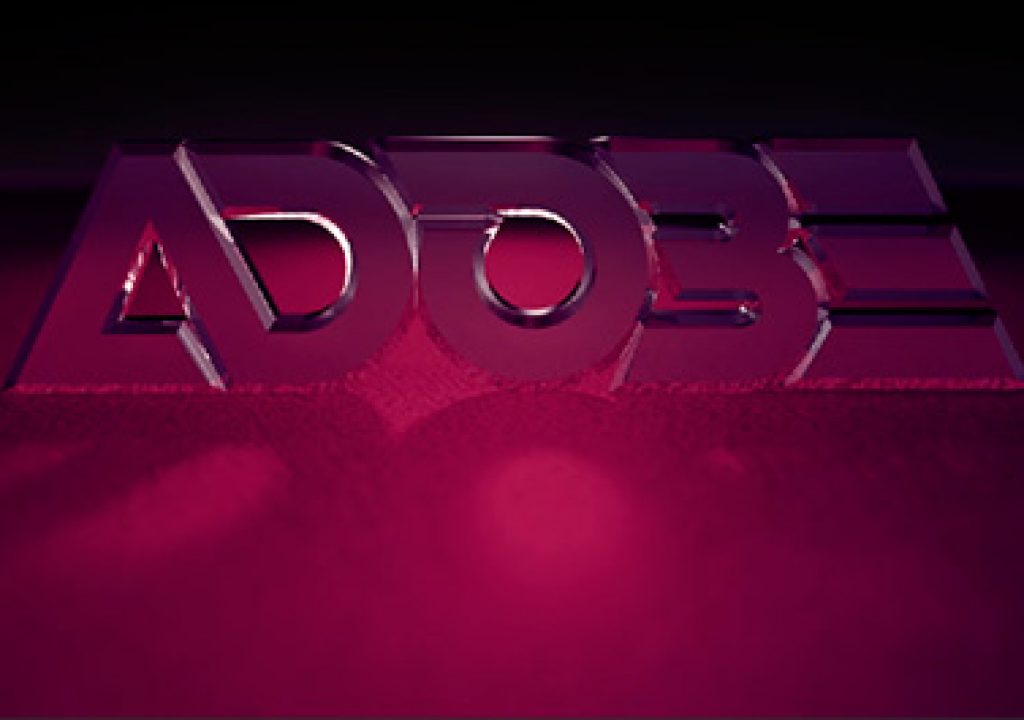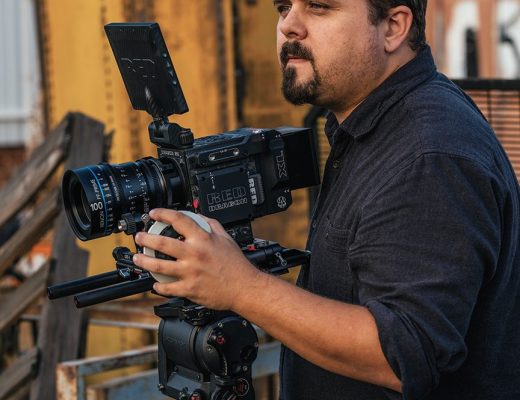A big addition to After Effects CS6 was the introduction of a Ray-traced 3D composition renderer that handles reflections, transparency, index of refraction, environment maps, in addition to the existing material options. Today in Creative Cloud CC, the chief limitation is still render time, but there's set-up advice for those willing to overcome the obstacles to get the lovely renders.

To enable this feature, you just adjust the Composition Settings. There are limitations: features like blending modes, track mattes, layer styles, and masks and effects on continuously rasterized layers are not rendered. Brian Maffitt explained the essentials:
The biggest gotcha is that render times for ray-tracing are painful without serious GPU power, which requires a specific set of Nvidia graphics cards that use the OptiX library. The issue of hardware requirements and speed was introduced adeptly by Stu Maschwitz in Ray Tracing in After Effects CS6, who “ordered out” some nice renders like this:
There's a list of approved cards for AE CC (you may need to update CUDA drivers), but even then there can be memory problems with some cards. And of course if you add your card to the approved preference list, you may get errors and crashes. Happily, the After Effects CS6 (11.0.4) update included bug fixes for ray-traced 3D renderer. After Effects Help has some additional advice:
“Depending on your hardware and complexity of your composition, objects within Ray-traced 3D compositions can be difficult to manipulate. If you are having a difficult time manipulating objects in the Ray-traced 3D composition, you can use Fast Previews. Fast Previews mode is ideal to use for roughing in, and experimenting with extruded text and shape layer animations.”
At this point many will not want to mess with the ray-trace comp renderer, and opt-out in favor of pseudo 3D solutions (tutorial roundup), Cinema 4D, or the fast Video Copilot Element 3D plug-in.
Others pressing on can find help with the advice of Roland Kahlenberg and by following up on many the tutorials mentioned by Todd Kopriva. Todd collected free 3D material options project and tutorials for After Effects CS6, including the presets and tutorials from Motionworks (example project on Adobe Exchange), Brian Maffitt, and Todd himself. You may also want to read over the intro to CS6 by Chris and Trish Meyer, and see their video on Targeting Properties in the new Ray-Traced 3D Engine.
Here's Todd's own introduction, Extruding 3D Text and Shapes and Modifying Geometry Options, from the free After Effects CS6 New Features Workshop from Video2brain:
There's a lot of ducks to line up for this feature, but there are still a few fans that offer advice. A good best-practices guide was recently posted by Roland Kahlenberg of broadcastGEMs on the AE-List. It includes an interesting note on ray-trace rendering with Premiere Pro via Dynamic Link – Premiere renders (with headless AE) are faster than just AE, but they suffer from some slight quality degradation!
You have FIVE sets of preview options/settings when Ray-tracing in AE –
A) Ray-tracing (RT) options (Ray-tracing Renderer Options Window)
B) Fast Previews Options (Timeline)
C) Draft 3D (Timeline)
D) Render Previews with/without user-selected MP settings
E) Rendering in PPro via Dynamic Linking (DL)
Previews –
A) 1-5 for quality and Box for anti-aliasing should be sufficient for you to ascertain aesthetics. A good tip is that you can switch between RT and Classic Renderers at any time without AE losing your RT (extrusion related settings) when you go from RT to Classic and then back to RT – all your RT settings will be retained.
B) Don't bother with Adaptive Resolution. Use either Fast Draft or Draft when animating. Draft is of course better Q and allows for Ray-tracing reflections – which Fast Draft doesn't. So, choose Draft if it accords you a speedy UI. Only switch on Final Quality as and when required and where feasible, use Region of Interest when in Final Quality preview mode.
C) Switch on Draft 3D to preview without Lights/Shadows. You can still have reflections (ie any Fast Previews option other than Fast Draft) when Draft 3D is switched on.
D) If you have an OptiX-capable card then rendering with be handled by the GPU, so not much to do here with the settings. HOWEVER, I always switch on Render Multiple Frames Simultaneously for RAM Previews. The issue with this setting is its slow-ness in getting the procs up and running. However, when RT is on, there is no such issue. Hence, any effect that you have in the comp, that takes advantage of RMFS, will be overcome this known bottleneck
E) Amazingly, I've found PPro renders of RT comps (via DL) to be much faster than AE. It's perhaps due to the slight quality degradation but it can be up to 10 times faster! Not only are RT previews faster but you have the added advantage of leveraging on PPro's cache system which allows you to splice, split, slip etc without having to re-render the clip/sequence. For a final sequence that uses multiple RT precomps, the productivity gains is insane. Another + is that PPro renders RT comps as though Fast Previews was set to Final Quality. So, you get speed + quality (but see Final Render in PPro caveat below).
This multi-cam sequence (http://www.broadcastGEMs.com/MediaScreamer01/bGEMs – Ray-tracing Multicam 01 FINAL_01.mp4) was created in four separate comps and then edited in PPro. In PPro, I could time-stretch, slip and slide, edit etc until I was happy with the edit in PPro and the animation in AE. Once, confirmed in PPro, I would then jump into AE and manually conform the KFs to suit the speed ramp changes in PPro. Then it's back into PPro for a final preview render. I then copy all the comps/clips in PPro and paste them into a new comp in AE. Then it's a matter of replacing the pasted clips with their respective AE pre-comps.
Final Renders –
Set the Ray-tracing options to a suitable value. 7-15 for Ray-tracing Quality and Cubic for anti-aliasing are what I normally use. You should expect final renders to be long but certainly acceptable for me. This is where a CUDA/OptiX card comes in handy. You can expect up to 40 times faster renders with an OptiX-capable GPU over CPU renders.
DO NOT render RT comps from PPro. From the few CODEC tests that I've done, PPro's renders are not as pristine as AE's for identical render settings.
I'm certain your mileage will differ but working with RT in AE can be quite a productive endeavor.
[Note: The glass render picture made with the CS6 ray-tracer by Giovanni Antico.]

Filmtools
Filmmakers go-to destination for pre-production, production & post production equipment!
Shop Now













